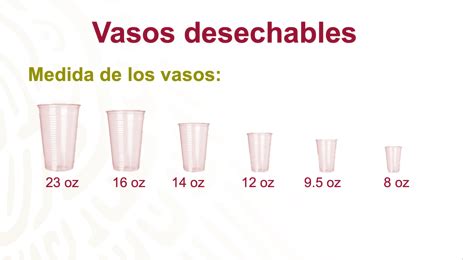Cuanto Es 8 Onzas En Litros
Kalali
Mar 31, 2025 · 4 min read

Table of Contents
How Many Liters are in 8 Ounces? A Comprehensive Guide
Understanding unit conversions is crucial in various aspects of life, from cooking and baking to scientific experiments and international trade. One common conversion that often arises is figuring out how many liters are in a given number of ounces. This article delves deep into the conversion of 8 ounces to liters, providing a clear and comprehensive understanding of the process and addressing common related questions.
Understanding Units of Measurement: Ounces and Liters
Before jumping into the conversion, let's briefly define the units involved:
-
Ounces (oz): This is a unit of volume, commonly used in the United States and other countries. It's essential to differentiate between fluid ounces (fl oz), used for liquids, and avoirdupois ounces, used for weight. In this context, we're solely focused on fluid ounces.
-
Liters (L): This is a metric unit of volume, widely adopted internationally. A liter is a significantly larger unit than a fluid ounce.
The difference in scale between fluid ounces and liters is why understanding the conversion process is so important. It prevents errors in recipes, scientific calculations, or any situation requiring precise volume measurements.
The Conversion Factor: From Ounces to Liters
The key to converting fluid ounces to liters lies in the conversion factor. One fluid ounce is approximately equal to 0.0295735 liters. This means that to convert any number of fluid ounces to liters, you must multiply the number of ounces by this conversion factor.
Therefore, to find out how many liters are in 8 ounces, we perform the following calculation:
8 fl oz * 0.0295735 L/fl oz ≈ 0.236588 L
Therefore, 8 fluid ounces is approximately equal to 0.237 liters. We usually round to three decimal places for practical purposes.
Practical Applications: Real-World Examples
The conversion of fluid ounces to liters is vital in numerous situations:
-
Cooking and Baking: Many international recipes use metric units. Converting fluid ounces in recipes to liters ensures accurate measurements and consistent results. For example, if a recipe calls for 8 fluid ounces of milk, you'll know to use approximately 0.237 liters.
-
Scientific Experiments: In laboratories and scientific research, precision is paramount. Converting between different units of volume, such as fluid ounces to liters, ensures accuracy in experiments and data analysis.
-
Medicine: Dosage instructions might be given in fluid ounces, while measuring instruments might be calibrated in liters. Knowing the conversion factor is crucial for accurate medication administration.
-
International Trade: When dealing with international commerce, understanding different unit systems is crucial. Correctly converting volumes ensures accurate transactions and avoids misunderstandings.
Variations and Considerations
While the conversion factor we used is generally accepted, it's important to note slight variations might exist depending on the specific definition and standard used. However, the difference is usually negligible for most practical applications.
Frequently Asked Questions (FAQs)
Here are some common questions related to converting fluid ounces to liters:
Q1: What is the exact conversion factor from fluid ounces to liters?
A1: The exact conversion factor is 0.0295735295625 liters per fluid ounce. However, for most practical purposes, rounding to 0.02957 or even 0.03 is sufficiently accurate.
Q2: Can I convert liters to fluid ounces?
A2: Absolutely! The reverse conversion is simply dividing the number of liters by the conversion factor. The conversion factor from liters to fluid ounces is approximately 33.814.
Q3: Are there online converters for fluid ounces to liters?
A3: Yes, many online conversion tools are available that can quickly and easily convert fluid ounces to liters. These tools are convenient but understanding the underlying conversion factor is still valuable for problem-solving and error-checking.
Q4: Why is it important to specify "fluid ounces"?
A4: The term "ounces" can refer to both weight (avoirdupois ounces) and volume (fluid ounces). Specifying "fluid ounces" ensures clarity and avoids confusion in conversions.
Q5: What are some common errors to avoid when converting fluid ounces to liters?
A5: Common errors include using the wrong conversion factor, forgetting to account for the units involved, and misinterpreting the result. Always double-check your work and use a calculator to minimize calculation errors.
Conclusion: Mastering the Conversion
Understanding the conversion of fluid ounces to liters is a valuable skill across various domains. By grasping the fundamental conversion factor and its practical implications, you can confidently navigate situations requiring precise volume measurements. Remember to always clarify whether you're dealing with fluid ounces or avoirdupois ounces and use a calculator to minimize the risk of errors. This comprehensive guide aims to equip you with the knowledge and confidence to accurately convert between fluid ounces and liters in any situation you encounter.
Latest Posts
Latest Posts
-
Cross Section Of A Rectangular Pyramid
Apr 02, 2025
-
Is Grain Alcohol A Pure Substance
Apr 02, 2025
-
Does Oxygen Gain Or Lose Electrons
Apr 02, 2025
-
How Many Miles An Hour Is The Speed Of Sound
Apr 02, 2025
-
What Is The Percent Of 20 Out Of 25
Apr 02, 2025
Related Post
Thank you for visiting our website which covers about Cuanto Es 8 Onzas En Litros . We hope the information provided has been useful to you. Feel free to contact us if you have any questions or need further assistance. See you next time and don't miss to bookmark.
